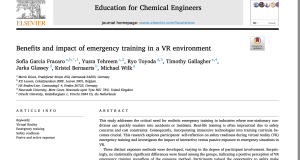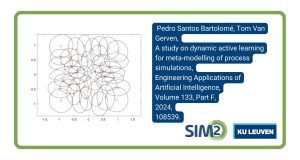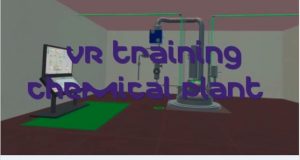Today, we’ll take you on a journey to find out more about our work with children and about our attempts to help them transition to future professionals.
The flight from science
On an international level, enrollment in the STEM disciplines is low and decreasing. STEM careers are also not actively pursued, and this situation is dubbed "the flight from science". Several factors seem to be contributing to this situation: Age, Attainment, Teaching and Learning, School Type, Persons of Influence, Conceptions of Science and Scientists, Gender.[1] The domain of Chemistry is facing the same difficulties concerning enrollment. The shortage of candidates for their employment needs is also affecting the Chemical Industry as well.
The CHARMING project is dedicated to investigate and address some of these causes. That is why our researchers are organized into three teams focusing on different age groups.
These age groups face different challenges and therefore need tailored support as well.
For example, professionals working in the industry need efficient and engaging training programs. Students mostly need assistance in tackling the difficulty of learning chemistry. Finally, elementary school children need to engage with chemistry in interesting and interactive ways. This fosters interest in the domain and in potential career paths.
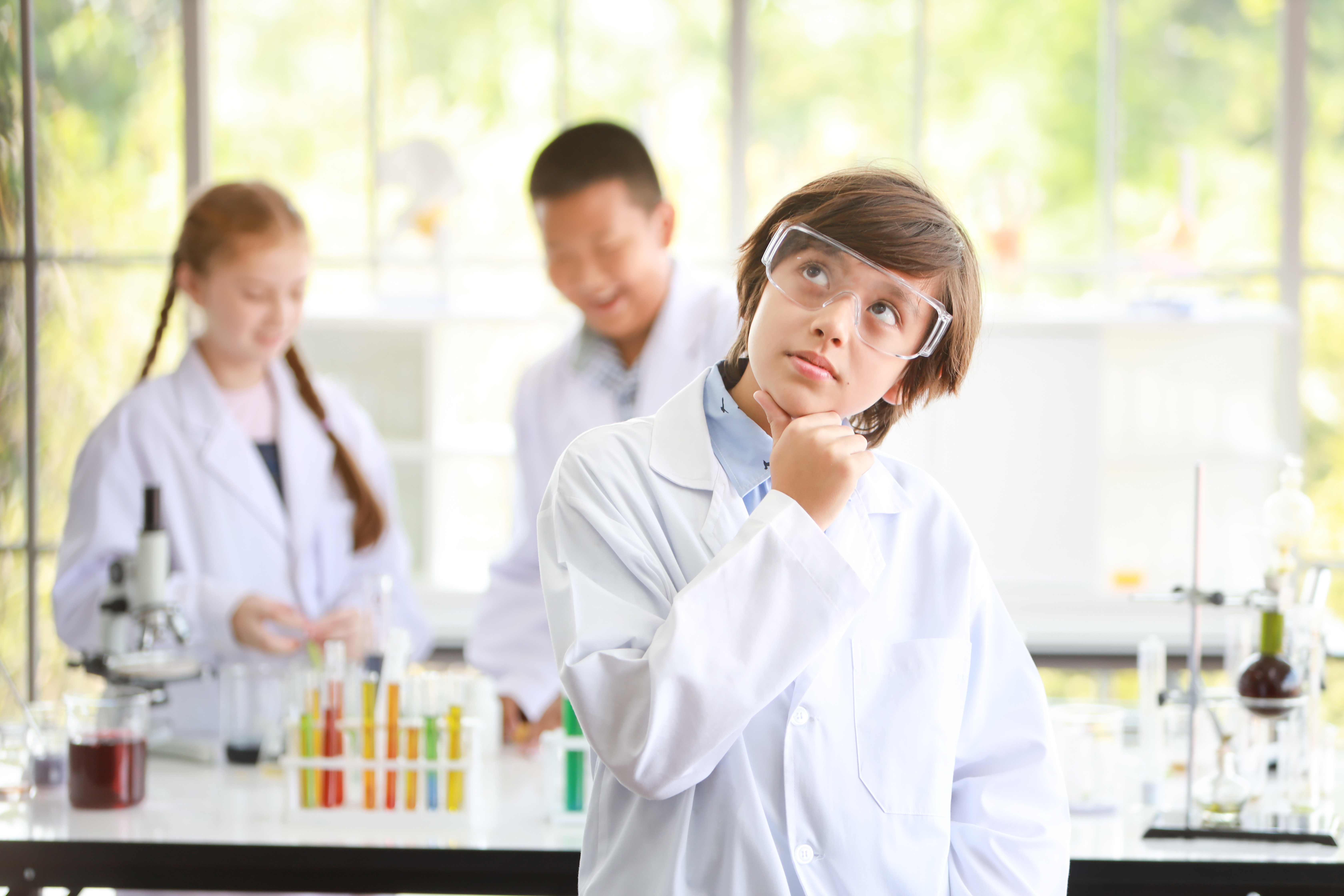
Thinking like a scientist
Moving into the field of Chemistry is not only about having the skills or knowledge. A specific mindset needs fostering. One must learn how to “think like a scientist”. In European primary schools, this is acknowledged through a special category of learning objectives in the “Sciences” curriculum.
But what exactly does it mean “to think like a scientist"?
To give you an idea, scientists are curious and analytical. They want to find out more about the world and they often ask a lot of questions. Curiosity drives them to find answers to these questions.
This means that they can identify a multitude of problems that need solving. Afterward, they investigate ways in which they could solve these problems. When trying to find or test solutions, they are rigorous in documenting their process.
Scientists are determined and patient. They are also good at solving puzzles and operating with logic. They find and analyze all the puzzle pieces and figure out, in a methodical way, how they all fit together. No matter how hard the puzzle, they do not abandon the cause. Every new piece connected is a victory.
But that doesn’t mean scientists are lone geniuses. Far from it! Often, the puzzles are too big and too complicated for a single person to solve. That is why scientists often collaborate to answer the most difficult questions. Thus, collaboration skills and the ability to understand and integrate the work of others are essential.
This is one way to describe it, but you might be wondering how all this manifests in practice.Here’s what we think.
For children, it means that practical skills, soft skills, and mental traits should be exercised too. We believe a connection between chemistry theory and chemistry practice is needed. A transition from passive learners to active participants.Not only because of the particularities of young ages but because of the complexity of chemistry as well.
The domain of chemistry involves at least three levels of knowledge: the micro, macro, and representational. [2,3]
The micro level deals with the part of chemistry that takes place on a microscopic level. It is the domain of atoms, molecules, and bonds and it cannot be experienced directly or observed with the naked eye.
On the other hand, the macro level deals with the part of chemistry that is observable. It looks at the properties and behaviors of the things around us from a chemical perspective. Colors, smells, chemical reactions – all these belong to this descriptive domain.
Lastly, the representational deals with the symbolic dimension of chemistry. Residing at the border between mathematics and chemistry, this level comprises chemical annotations, formulae, diagrams, and other mathematical representations.
The perceived difficulty of chemistry often arises in connection to abstract content or as a result of tacking all three levels at once.
A scientist can operate within all these levels. They can seamlessly transition and establish connections between them.
Introducing chemistry to novices, it is often recommended to start at the macro level. Afterward, it becomes a matter of gradually and carefully introducing the micro and symbolic.[2]
We are currently investigating how we can create new and playful ways of practicing this scientist's mindset in an age-appropriate way. Both in terms of content and difficulty.One of our goals is creating immersive mediums in which children can learn about and work like scientists. In a simplified way, of course.
We believe we can use these mediums to increase exposure to Chemistry and how it manifests in professions. That through a playful game-like approach, children can form a representation of scientists and their work. Or in the case a representation exists, improving it.

The case of negative perceptions
Many Europeans hold negative perceptions of scientists in society. Some believe that scientists cannot be trusted if they depend on money from the industry. Others believe that knowledge makes them dangerous or that they are often unable to see the bigger picture. [4] In addition, it seems some do not have a clear idea of what scientists do and if they are able to tackle the challenges of their work appropriately. [4]
This is something we want to address as well. It is not about singing the praise of Science or Chemistry. It's about exposing individuals to their complexity and pervasiveness. It's about highlighting the good sides too.
Think about the word "chemical" and its negative connotation in society: "chemicals in food", "chemicals in the air", etc.
But if we understand a chemical as a distinct compound or substance then we understand that everything is made of chemicals. Even the best of things.
Chemistry is everywhere. We are chemistry and our world is chemistry too.
Addressing some of the misconceptions and presenting supplementary facts and stories is necessary. We must become better guides in order to highlight the better parts of Chemistry sightseeing.
In the CHARMING project, we are in a unique position to do this. We benefit from the combined expertise of academia and industry. In addition, we have a diverse team spanning multiple disciplinary backgrounds.
This collective experience and our passion propel us to create more than just new knowledge. It motivates us to create practical immersive experiences too. What kind of experiences?
Future’s Brightest Scientists
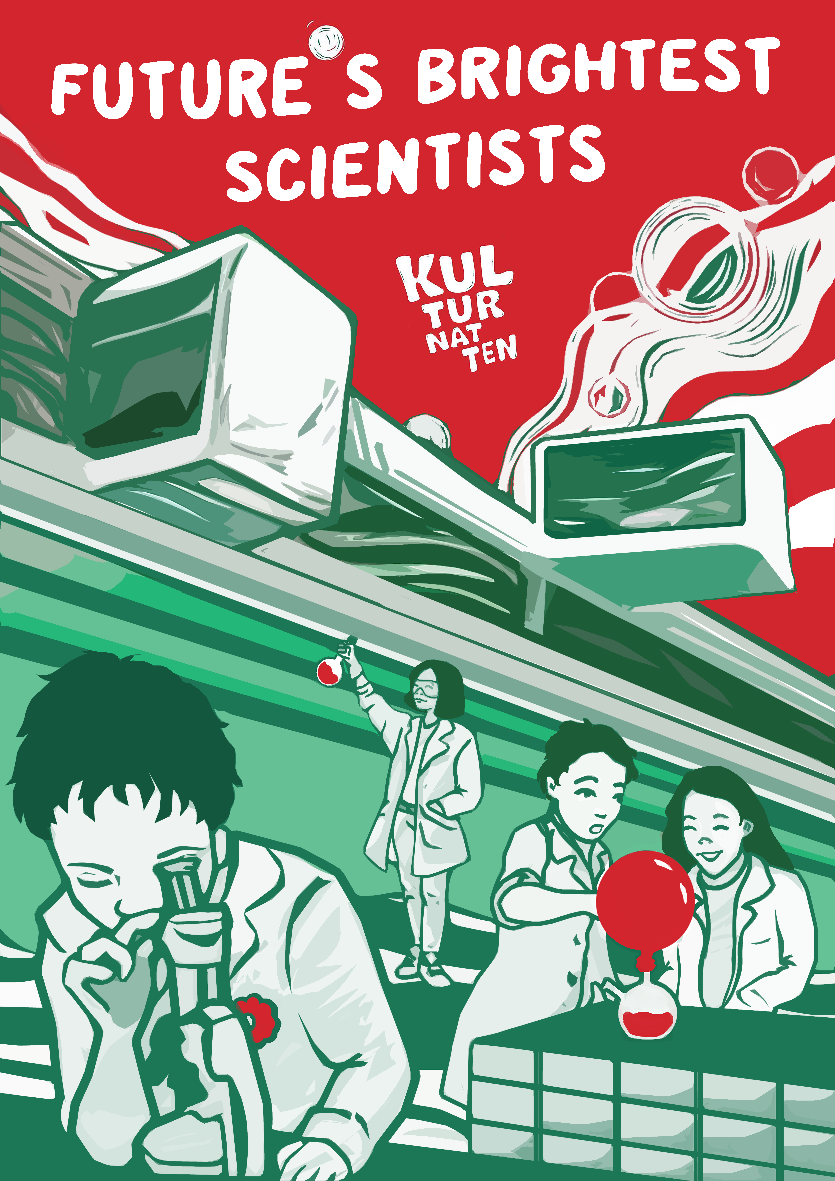
We are trying to harness the power of play and games in different ways. Different formats, different settings, different content too!
We already designed, created, and tested an experience last year in October. "Future’s Brightest Scientists" was showcased at a nationwide event in Denmark. Called Culture Night, it is recurring on a yearly basis in autumn. During the event, cultural venues offer free events and activities to all visitors.[5] The IT University of Copenhagen, partner of CHARMING and home to two of our researchers, always participates.
The experience involved a chemistry themed Escape Room designed to instill in children the spirit of a scientist. Each play session lasted about 30 minutes and involved the participation of 3-5 children.The goal was not to "escape" but to reach a specific product: a density column with three stacked solutions in different colors.
In order to design this, we surveyed the curriculum and Science manuals from multiple European countries. We have also looked through online or physical chemistry experiments and games.
We wanted to offer children the opportunity to work and feel like scientists.
We provided lab coats, safety glasses, and gloves for the participating children. This was for their protection and for the sake of the immersion as well. Only common household substances were present in the room. These were safe to use with the provided equipment and by respecting the pre-game instructions. However, an overseer was present in the room as well.
After all, a good scientist is professional – they never smell, eat, or throw their experimental substances and they always wears his protective equipment.
The physical space was a pop-up laboratory containing chemistry beakers, flasks, microscope, tables, charts, scientific illustrations, labeled substances, and a tiled white counter.
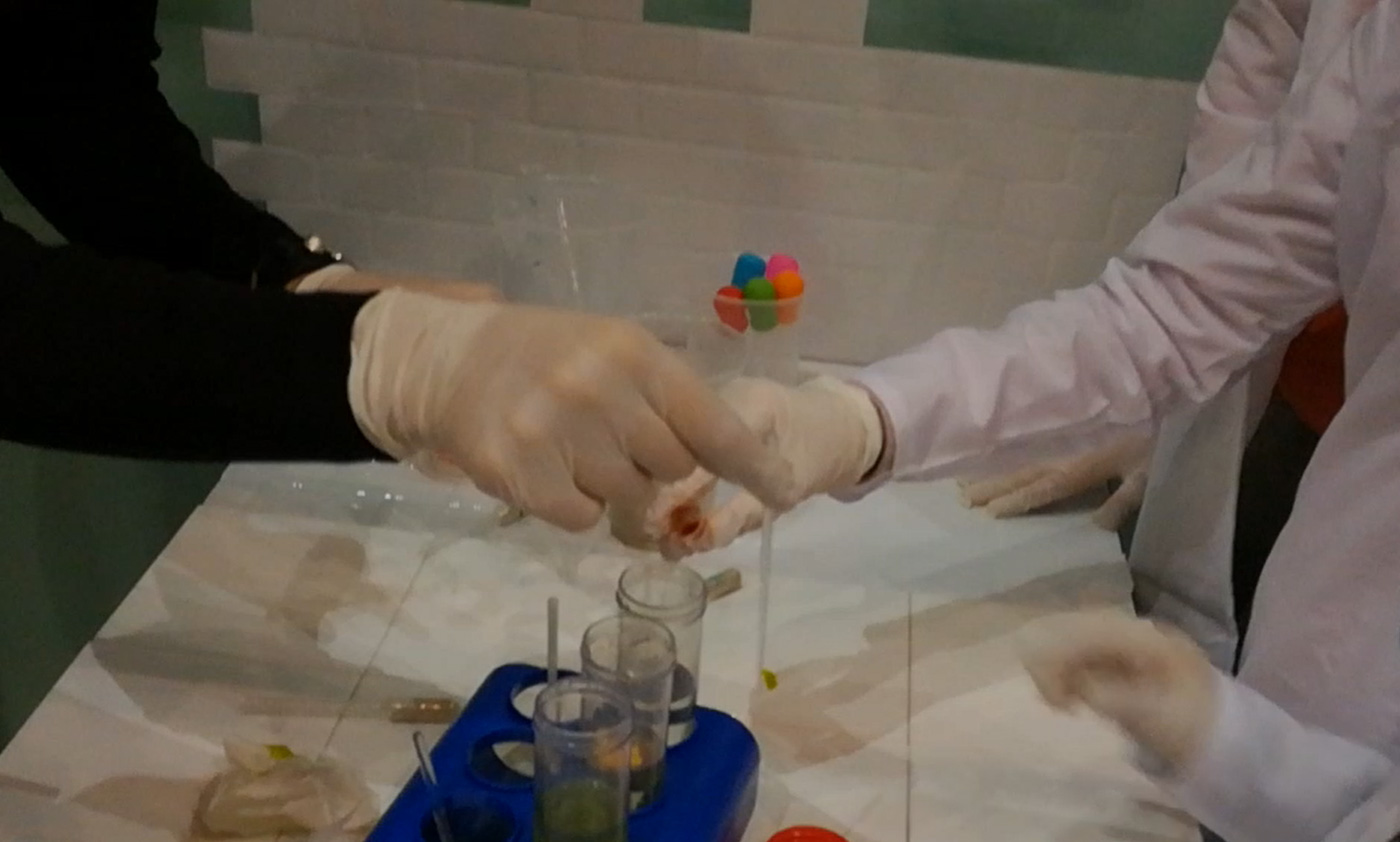
This resulted in a non-linear experience involving multiple puzzles. Children solved the puzzles by using clues present in the room and by performing several small experiments.
The puzzles involved the same methodical procedures that scientists use in their day to day work. Children created and used instruments to make scientific measurements. They recorded and analyzed data. They needed to communicate, collaborate, and synchronize tasks.
"Future's Brightest Scientists" was an enlightening first experience with our target audience. It helped us better understand what we can do to help and what avenues for future research exist.
Coming up: more chemistry experiences for children
On the roadmap, we have tabletop games, interactive science-fair experiments, and games that highlight the relevance of chemistry in everyday life or as a career path.
Stay tuned to find out more about our other projects in the future!
References:
[1] Regan, E.; Dewitt, J.; Attitudes, Interest and Factors Influencing STEM Enrolment Behaviour : An Overview of Relevant Literature; Chapter 5, 2015
[2] Johnstone, A.H.; Teaching of Chemistry – Logical or psychological?; Education: Research and Practice in Europe 2000, Vol. 1, No. 1 Chemistry
[3] Johnstone, A.H.; Macro and micro chemistry; School Science Review 64 (No. 227),1982
[4] European Commission; Science and Technology – Special Eurobarometer 340; Wave73.1 – TNS Opinion & Social, 2010
[5] https://www.itu.dk/om-itu/events/events/2019/kulturnat-2019
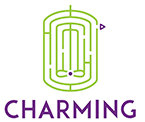


.PNG)

